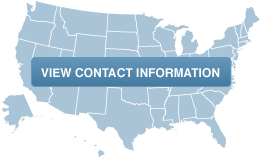The Department of Health and Human Services and the Department of Education Joint Interdepartmental Review of All Early Learning Programs for Children Less Than 6 Years of Age
Congress requested that the Secretary of Health and Human Services, in conjunction with the Secretary of Education, review the Government Accountability Office (GAO) report 2012 Annual Report: Opportunities to Reduce Duplication, Overlap and Fragmentation, Achieve Savings, and Enhance Revenue (GAO-12-342SP) on duplication of early learning and care programs and submit a report to Congress that outlines efficiencies that can be achieved, including recommendations for eliminating overlapping programs and streamlining early learning programs serving children under age six.
The long-standing federal investment in early learning and care reflects recognition of the diversity of children’s and working families’ needs. Some programs are focused on the specialized needs of infants and toddlers while others promote early learning for disadvantaged children during the two years before kindergarten. Some programs operate during a traditional school day and year while others meet the needs of families for additional hours of care for the full year. Some programs provide children nutritious food and health services to enable children to thrive and learn.
Despite the many children who benefit from these programs and investments, many more eligible children cannot be served with the current funding levels. For example:
- There were 14.2 million children potentially eligible for assistance under the Child Care and Development Block Grant in the average month in 2012.[1] The average number of children receiving federal child care assistance through CCDF each month in 2012 was only 10 percent of those eligible, or 1.5 million.[2],[3]
- Only four percent of income-eligible infants and toddlers are receiving Early Head Start services and only 40 percent of income eligible preschool-aged children are enrolled in Head Start.[4]
This report highlights the Administration’s proposal to close these gaps in access and quality as well as descriptions of the ongoing efforts within and among federal agencies to reduce fragmentation and promote coordination at every level.
See the full report here.
See the executive summary here.
[1] Estimates of Child Care Eligibility and Receipt for Fiscal Year 2012. November 18, 2015. U.S. Department of Health and Human Resources, Office of the Assistant Secretary for Planning and Evaluation, available at https://aspe.hhs.gov/pdf-report/estimates-child-care-eligibility-and-rec...
[2] The Child Care and Development Fund (CCDF) is authorized by the Child Care and Development Block Grant Act and Section 418 of the Social Security Act. CCDF is the combination of the Child Care and Development Block Grant (CCDBG) discretionary funding and mandatory funds. FY2013 numbers are from: https://www.acf.hhs.gov/programs/occ/resource/fy-2013-ccdf-data-tables-f...
[3] Child Care and Development Fund Statistics, available at https://www.acf.hhs.gov/programs/occ/resource/ccdf-statistics
[4] The estimates of income eligible children served include those at or below 100 percent of the poverty line according to 2010 Current Population Survey. These estimates do not factor in other eligibility criterion, including children in foster care or experiencing homelessness, as well as children who may be eligible under the Head Start Act’s authority to serve up to 10 percent of children above the percent line and an additional 35 percent of children whose families earn 100 to 130 percent of the federal poverty line.


